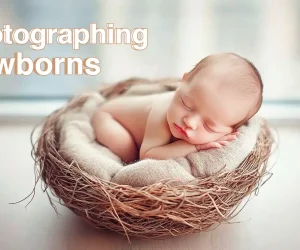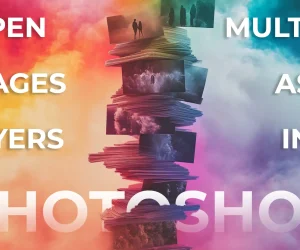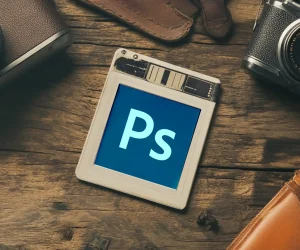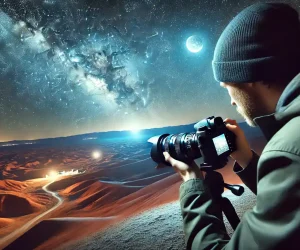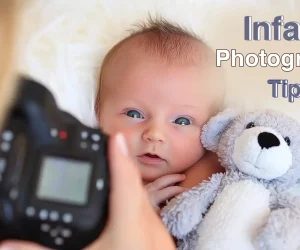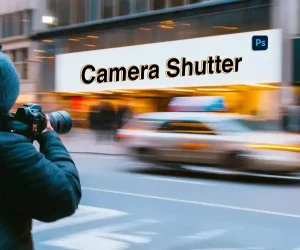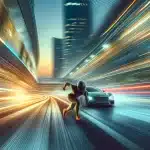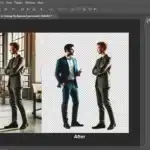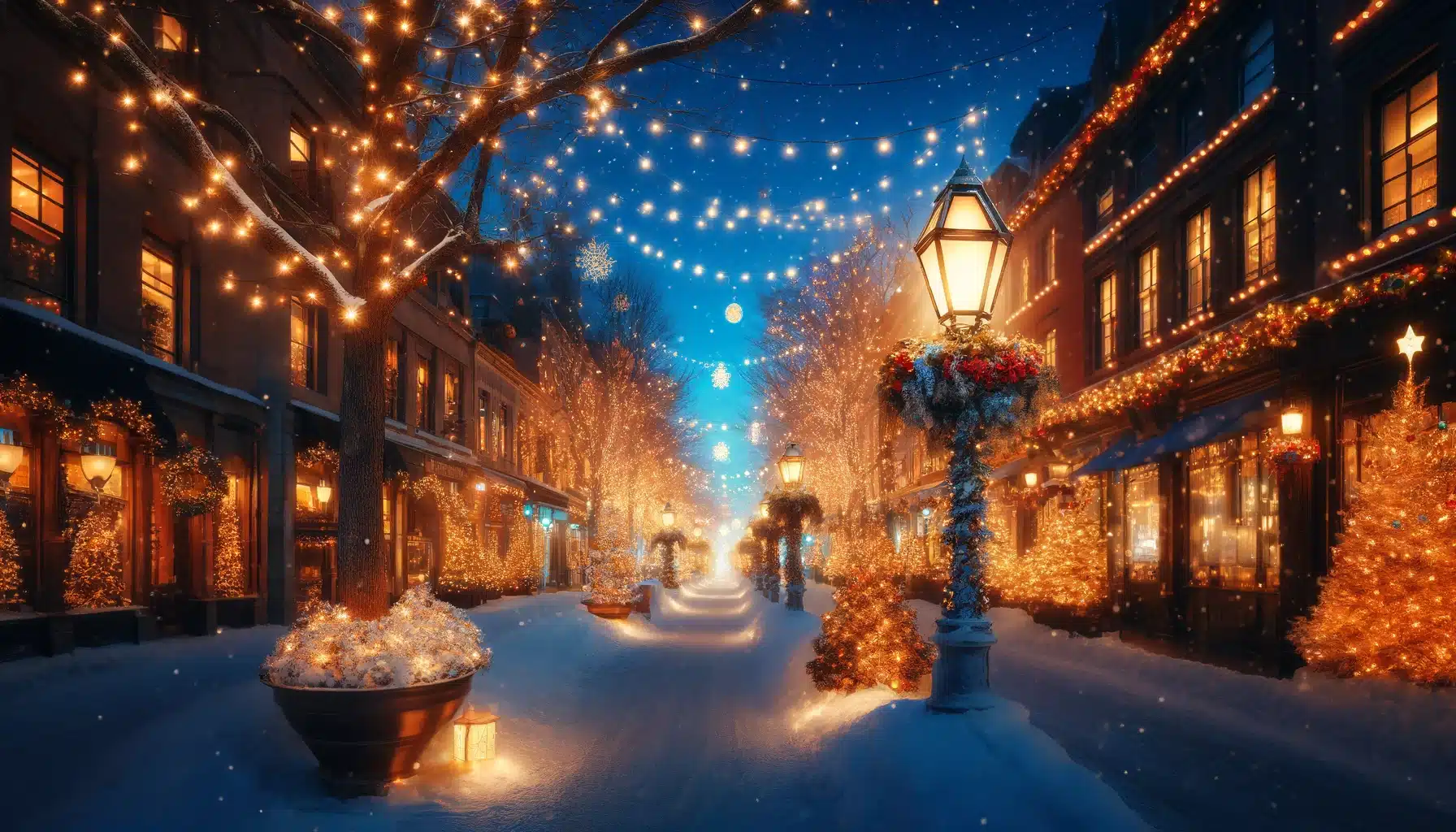
Introduction: How to Photograph Christmas Lights
Taking pictures of Christmas lights is like capturing little stars on Earth. It’s all about getting the right glow and sparkle. Every photographer wonders how to photograph Christmas lights at least once in their life.
This article will dive into the world of Christmas lights pictures. We’ll share secrets on how to make those twinkling lights stand out in your photos, whether you’re shooting the grand display of city streets or the cozy charm of your living room. From choosing the right opportunity to finding the perfect angle, we’ll cover everything you need for stunning outdoor Christmas photography.
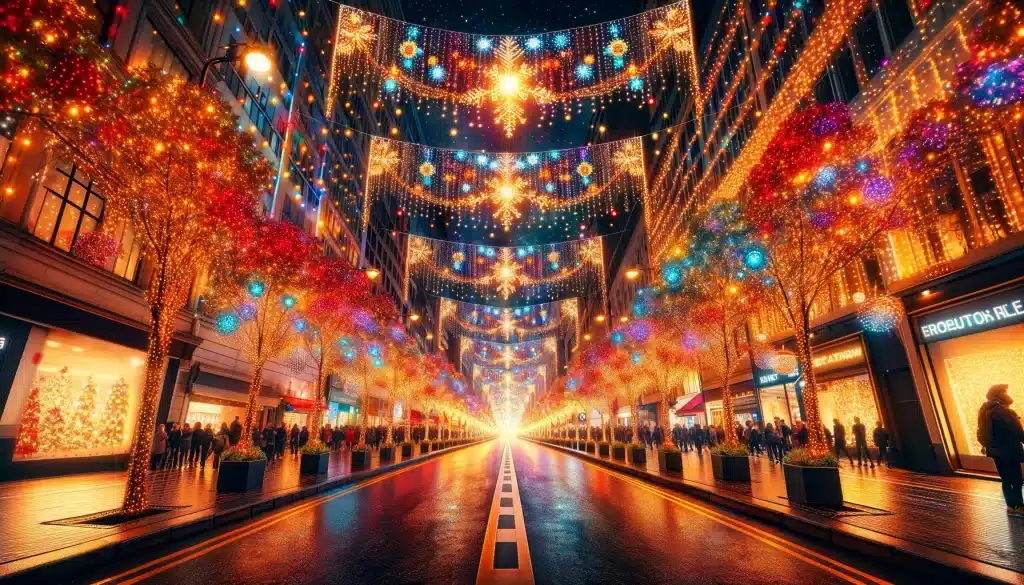
Table of Contents
Essential Equipment for Christmas Lights Photography
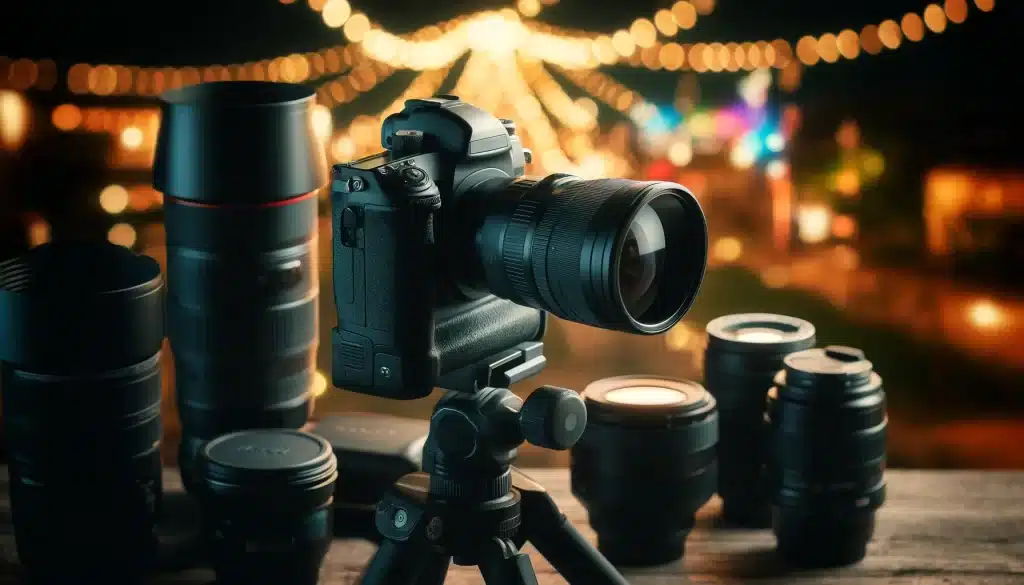
To capture the enchanting beauty of glowing holiday lights, having the right equipment is crucial. This setup not only helps in achieving clear and focused images but also adds a magical touch to the Christmas lights pictures. Here’s the right equipment needed to learn how to photograph Christmas lights:
Camera with Manual Controls
A camera that offers these features is crucial for Christmas light photography. Such a camera allows you to adjust the exposure, focus, and other options to suit the conditions and its demands. Cameras with manual controls, like DSLRs or mirrorless cameras, are preferred because they offer the flexibility needed to get the lights in their full glory.
Sturdy Tripod
It is an essential tool for stabilizing the camera, especially in dark conditions where longer exposures are required to catch the glow of these lights. A good tool eliminates the risk of camera shake, ensuring that your photos are sharp and clear.
Quality Lenses
The choice of lens can greatly impact the outcome of your Christmas lights pictures. A lens with a wide opening is ideal as it allows more glare to enter, which is perfect for darker conditions. Additionally, a lens with zoom capabilities can be advantageous. Lenses that offer sharpness and clarity will help in capturing the intricate details and vibrant colors of the outdoor Christmas lights.
Understanding Shutter Speed and ISO
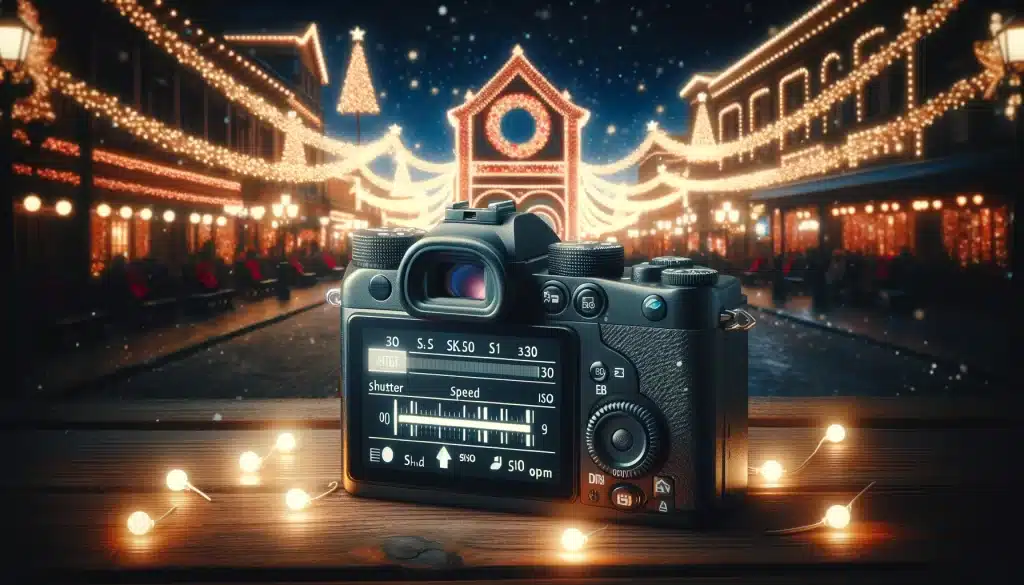
When it comes to Christmas Lights pictures, mastering shutter speed and ISO is fundamental for capturing the festive sparkle without losing detail. These camera functions are key to adjusting the exposure and clarity of your photos, especially in darker conditions.
Pro Tip: Learn these Lightroom shutter speed secrets to further enhance your skillset.
Optimal Shutter Speed for Capturing Light Trails
Shutter speeds refer to the amount of seconds the camera’s shutter is open to expose glare onto the camera sensor. It is measured in seconds or fractions of a second. Start with a slow shutter, like 1/4 second. This lets your camera see the lights longer and makes them look brighter. If the lights are too dim, try a slower speed until they look just right. To avoid blur, don’t go too slow if you’re holding the camera, or your photo might get blurry.
ISO Settings for Clear Nighttime Images
It refers to the sensitivity of your camera’s sensor to light. ISO is a critical setting, especially when capturing images in darker conditions like outdoor Christmas photography at evening. To balance it with shot velocity for magical photograph Christmas lights, start with a low ISO, around 100. This will keep your images crisp and clear. If the picture is too dark, increase it a little bit. But remember, its higher value can make your pictures grainy.
How to Photograph Christmas Lights with Right Aperture and Depth of Field
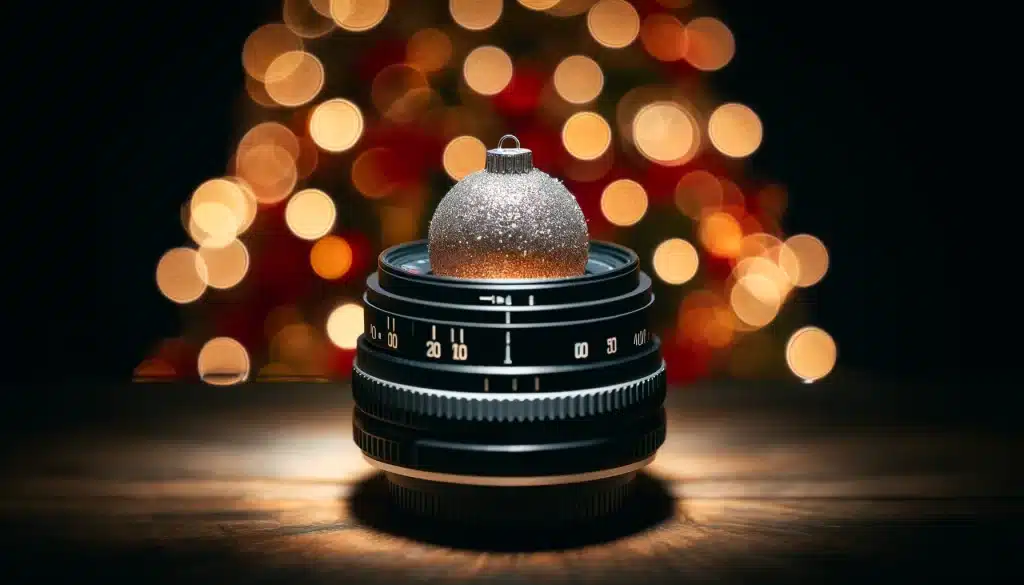
How to Set Aperture for Christmas Light Photography
Aperture on a camera refers to the opening in your lens through which light enters. It’s measured in f-stops (like f/2.8, f/4, etc.). Use a wide opening (small f-stop number) to let in more light and make the Christmas lights pictures pop. This is great for creating a soft background with a focused subject. Alternatively, you can use its smaller range (larger f-stop number) to get more of the site.
| Scene | Setting | Effect |
|---|---|---|
| Close-up of lights | f/2.8 to f/4 | Bright, blurred background (bokeh) |
| Full tree or room | f/8 to f/11 | Sharp, detailed image |
Pro Tip: Learn how to remove background in Photoshop in case you ever find yourself in that situation.
Depth of Field Techniques for Christmas Scenes
Depth of field (DoF) refers to the range of distance within a photo that appears acceptably sharp. A wide opening (small f-stop number) is used to create a shallow depth of field. This is ideal for close-up shots of these decorations or portraits. To take a wider picture like a decorated market or a family gathering in front of the tree, a narrow aperture (larger f-stop number) will give you a deeper depth of field.

How to Photograph Christmas Lights at Different Times
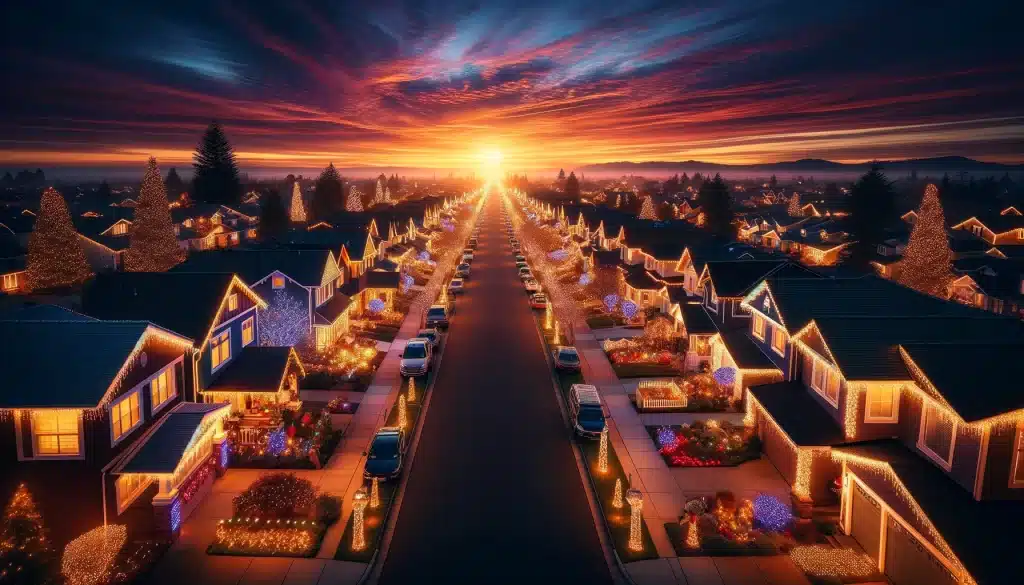
Choosing the right moment to photograph festive Christmas lights is crucial. Without a doubt, the best lighting can make your photos stand out beautifully.
| Time of Day | Outdoor Christmas Photography | Intimate Christmas Lights Pictures |
|---|---|---|
| Blue Hour | Perfect for capturing the contrast between the sky’s deep blue and the warm lights. | Ideal for a magical glow with a slightly illuminated background, adding depth to the image. |
| After Sunset | Great for when lights are the brightest against the darkening sky. | Good for focusing on the lights’ details and colors without too much ambient light. |
| Night | Best for capturing the full intensity of large light displays. | Can be challenging due to very low ambient light. |
Tips for Indoor and Outdoor Christmas Light Photography
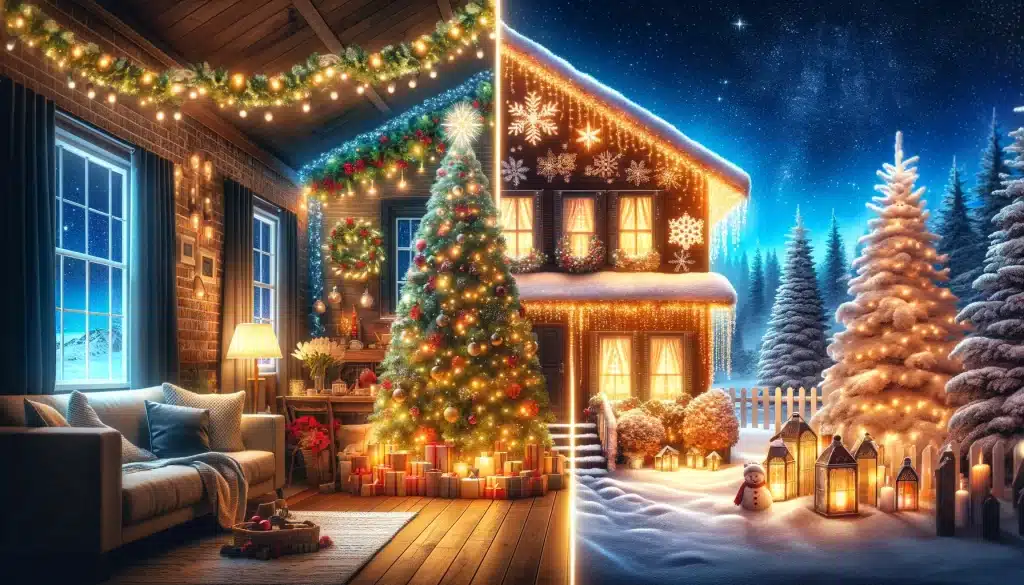
Taking beautiful photos of Christmas lights, whether inside or outside, requires understanding the different challenges and opportunities each setting presents. Try out these creative tips for photographing festive lights in both environments.
| Setting or mode | Indoor Christmas Photography | Outdoor Christmas Photography |
|---|---|---|
| Lighting | Mix of artificial lights and ambient room lighting. Use usual functions to balance the brightness. | Primarily ambient and street lighting. Longer exposures may be needed for full glow of lights. |
| Composition | Consider details like ornaments. Frame shots to include cozy room elements. | Take the greatness of displays. Include landscape elements like buildings or trees to add context. |
| Camera Settings | Use a tripod to stabilize. Lower ISO to reduce grain. Aperture can vary based on desired depth of field. | Sturdy tool essential for long exposures. Use a lower ISO for less noise. |
| Time of Day | Anytime, but Evening enhances the lights’ effect. Control room lighting to avoid overexposure. | Best after sunset during the blue hour for a natural balance between light and dark. |
| Weather Considerations | Indoor conditions are controlled, so no need to worry about weather. | Outdoor shoots are weather-dependent. Clear nights are ideal, but mist or snow can add interesting effects. |
Capturing Christmas Lights in Different Weather Conditions
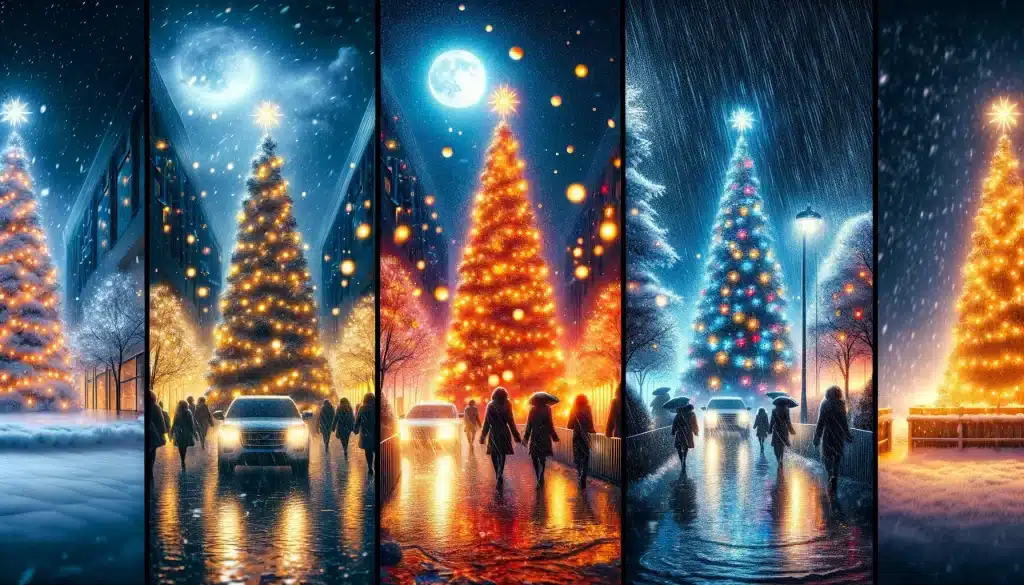
Photographing these lights in varying weather conditions can transform a standard holiday site into an extraordinary photo opportunity. Each type of weather brings its own challenges and benefits to outdoor Christmas photography, especially when capturing the vibrant lights of the holiday season.
Clear Weather
In clear weather, these lights shine brightly against the dark sky. To make the most of these conditions, setting up your camera will ensure stability for long exposures. Plus adjusting the ISO to a lower setting will help maintain the clarity of the lights. The best moment to shoot is during the blue hour, where the remaining natural illumination provides a deep blue sky that contrasts beautifully with the warm hues of the yellow lights.
Capturing Lights on Snowy Evenings
Snowy conditions present a backdrop for lights, as the white of the snow amplifies the lights’ luminosity. In such weather, light metering may need adjustment to prevent overexposure due to the reflective nature of snow.
Capturing the Magic of Christmas Lights in the Rainy Weather
Rain adds a reflective sheen to surfaces, offering a unique opportunity to create a mirror-like effect that doubles the visual impact of the Christmas lights. When heading out in the rain, a lens hood is advisable to prevent raindrops from adhering to the lens and potentially ruining your shots. Pay special attention to puddles and other wet surfaces as they can serve as natural mirrors.
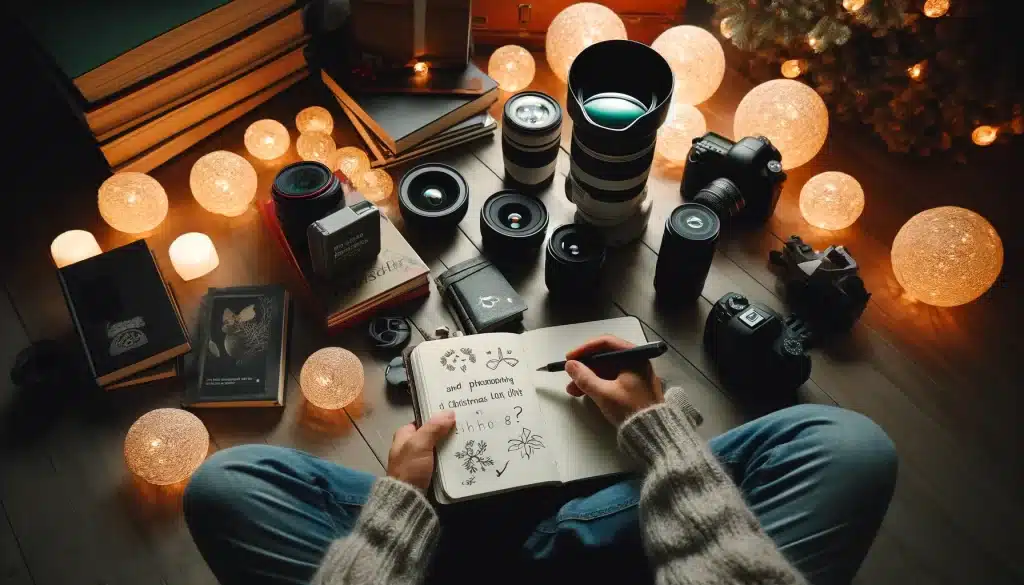
FAQs: How to Photograph Christmas Lights
How do you take good pictures of Christmas lights?
To capture stunning images of Christmas lights, ensure stability by using a tripod or bracing your camera against a steady surface. Adjust your camera to a slower shutter speed to allow more light in, and use a narrow aperture for sharpness. Experiment with different angles and perspectives to add depth and interest to your photos.
What settings should I use to photograph Christmas lights at night?
When photographing Christmas lights at night, set your device to a low ISO to reduce noise, and use a longer exposure time to capture more light. Adjust your white balance to match the ambient lighting conditions, and consider shooting in manual mode for full control over your functions.
How do you take blurry pictures of outdoor Christmas lights?
To create dreamy, blurry pictures of Christmas lights, experiment with intentional camera movement or use a lens with a wide aperture. Try shooting with a shallow depth of field to emphasize the lights while blurring the background. You can also add a soft focus filter in post-processing to enhance the dreamlike effect. .
How do you make Christmas lights not blurry in pictures?
For clear Christmas lights pictures, stabilize your photoing device with a tripod to eliminate shake. Set a suitable shutter velocity; if handheld, use faster speeds to avoid motion blur. Utilize physical focus to precisely adjust the attention on the lights themselves.
How do you make Christmas lights pop in pictures?
To make these lights pop in pictures, use a wide opening to create a shallow depth of field, which makes the lights stand out more. Also, photographing during the blue hour can provide a natural contrast that makes the lights more vibrant in your Christmas lights pictures. After getting the best shots, adjust the contrast and brightness during editing on Adobe Photoshop.
How do I take pictures of Christmas lights with an iPhone?
When capturing the magic of Christmas lights with an iPhone, use the camera app’s exposure adjustment by tapping on the screen where the lights are. Adjust the exposure by sliding up or down on the screen. Use the HDR for better glare capture and consider using a tripod or steady surface to avoid shake. This approach will help in photographing Christmas lights effectively with an iPhone, especially for outdoor Christmas photography.

Conclusion
Capturing the essence of Christmas lights has always been a passion of mine. Last year, I spent an evening experimenting with different settings to photograph the lights adorning the local park. The challenge of balancing the warm glow of the lights against the cool winter taught me the importance of understanding my camera’s capabilities.
This experience was not just about taking pictures; it was about capturing moments that embodied the festive spirit. For those looking to enhance their photoing skills, our Photoshop course and Lightroom Course offer a wealth of knowledge and practical tips. These courses are designed to help you get the festive brilliance of these lights with professional clarity.
Have a nice photoshoot!
Learn more about

